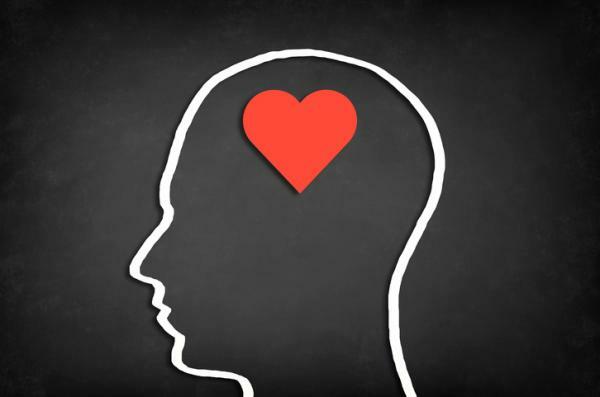
The word motivation comes from a Latin root meaning "to move", "to set in motion", in the sense of something that prompted action. It therefore constitutes a state - permanent or transitory and even sporadic - characterized by a favorable predisposition for action. Some researchers use the word "motives" to refer to the determining elements of such a state, while others employ both terms (motivations and motives) in a interchangeable. In this Online Psychology article we are going to analyze motivation in sport and see all the factors that influence it.
Index
- The concept of motivation
- Motivation related problems
- Hedonist theory of motivation
- Instinct theory
- Theory of Primary Needs
- Theory of restoring equilibrium
- Multiple factor theory
- Other theories about motivation
- Investigation and evaluation of motivations
- Importance of social motivations
- Classification of the athlete's motivations
- Sports competition: psychological analysis
- Unconscious motivations of the athlete
The concept of motivation.
It should be noted that the word "motive" has a rather rational connotation, while the term "motivation" Above all, it indicates an attitude of the total personality of the subject, with a preponderance of active factors - emotional Motivation is the driving force behind our behavior; This largely and almost always determines our success or failure, in the sense that it leads us to use our real capacities to a greater extent.
Motivation is therefore essential in all human activity and, of course, in training and competition, which are the activities that interest us here. In relation to an activity, motivation influences: The subject's attitude towards it. In the initiation and way of carrying out the activity In the degree of effort of the subject. In the evaluation of the activity.
In relation to an activity, motivation influences:
- In the attitude of the subject in front of it.
- In the initiation and way of carrying out the activity
- In the degree of effort of the subject.
- In the evaluation of the activity.

Motivation related problems.
- Determine if the motives are innate or acquired, or if there are both.
- Determine if the reasons are physiological, psychological or social, or if they can come from all three sources.
- Establish if there are unconscious motivations next to the conscious ones.
- Establish if they consist simply in seeking pleasure and avoiding pain, or if there are also other more complex factors.
Ultimately, what we are looking for is to know what the factors that determine and govern the behavior of human beings. Various interpretations have been given in this regard, the synthesis of which will lead us to specify and understand the motivations of the athlete.
Hedonist theory of motivation.
This theory, of ancient origin, expresses that human behavior is reduced to seeking pleasure and avoiding pain, how painful or unpleasant. In other words, human behavior is structured around the antithesis of pleasure - pain, like - dislike.
Although pleasure and pain are general motivating forces, these general reactions can be modified by individual experiences. In addition, a reversibility or a coexistence of opposing factors is possible, both in the normal terrain and in the pathological: this feature - so commonly observed - was called ambivalence by the Swiss psychiatrist Bleuler.
Either way, this reduction of all motivations to two unique sources it's too simplistic. The triggers of human behavior intertwine and form a complex fabric, which many times even confuses us. In addition, one might wonder in what particular way each individual tends to achieve pleasure and satisfaction, and to avoid what is painful or unpleasant. An athlete may gladly undergo physical deprivation to achieve success, or the recognition and approval of his coach. This is just an example, but we could multiply the similar cases.
Theory of instincts.
We affirm that human behavior is governed for the most part by innate action patterns (instincts), which basically allow it to survive, enabling it to deal more efficiently with environmental elements. Thus, for example, it is said that man tends to hang out with others due to his herd instinct, or that he plays because of his playful instinct.
As Werner Wolff puts it, “The term instinct means unlearned motive or innate tendency, and it is used in a very vague sense. The investigations of L. Bernard in 1924 showed that psychologists have applied the concept of instinct to about 6000 activities. However, research has proven that many psychic reactions called instincts are acquired. The so-called instinctive enmity of cats and dogs does not occur if they are raised together. Ethnological studies have shown that many of the instincts are culturally conditioned reactions. In some cultures it is the father who takes care of raising the children.
Psychoanalytic observations, on the other hand, brought about the replacement of the rigid and mechanistic scheme of a mosaic of instincts por the theory of the dynamic transformation of psychic energy. It was found, for example, that "fighting instinct" is often the result of frustrations; that the "instinct of power" can be a compensation between feelings of inferiority. And that certain fears and anxieties are transformations of sexual impulses. The theory of instincts is therefore insufficient to explain all varieties of human behavior.

Theory of primary needs.
It states that human behavior can be attributed to the existence of a few primary needs or urges, and that all actions can be reduced, ultimately, to the satisfaction of physiological needs such as hunger, thirst, food and sexual appetite. Within this theory there are two main nuances: a variant states that these primary needs are conscious and perfectly delimitable.
The other variant (psychoanalysis) emphasizes the unconscious mechanisms and the importance of sexual motives. This physiological approach has drawn much criticism. It is observed, for example, that the human being has a tendency to carry out certain activities because of the activity itself. Playing, manipulating objects and exploring do not seem to relate to purely visceral needs. In addition, this theory considers the human being as a kind of inert machine, which starts when visceral needs arise.
Theory of restoring equilibrium.
It was formulated by Cannon, who introduced the concept of homeostasis, a mechanism by which the body tries to maintain its integrity, balancing internal adaptations according to stimuli. He affirms that, when an imbalance occurs, the organism activates its regulatory mechanisms to return to a balanced state. Undoubtedly, there is a human being “self-regulation” mechanism, both in the physical and psychological sphere, by means of which he tries to restore or maintain balance.
We have an example in the defense mechanisms of the "I": compensation (by virtue of which a frustrated subject in one aspect of his life seeks to excel in another); sublimation (channeling lower tendencies towards higher ones), etc. However, and despite the undoubted existence of these mechanisms, not all aspects of human behavior can be explained by this tendency to restore balance. Cannon himself recognized that, very often, man performs actions that, precisely, break that balance.
Theory of multiple factors.
The complexity of human behavior prompted many researchers to develop a multidimensional theory. Murray and McDougall, for example, have emphasized the role of social motivations, in which they include the gregarious tendency (union with other people), aggressive (fighting with others), dominance, exploratory (curiosity, desire for knowledge), etc.
These theories are based on the concept formulated by Allport, of the "Functional Autonomy of Impulses", which means that the impulses become independent of their physiological bases. We can add that there is a duality in motivational factors. For example, the tendency to dominate and the tendency to submit; to power and flight; to aggression and protection. When encountering an obstacle, some people do their best to overcome it, but others submit or withdraw.
According to Nietzsche, the will to power is one of the basic tendencies of man, and Adler affirmed that the dominance tendency is one of the main motives of human behavior, and that when frustrated or deviated it can cause emotional upheaval. The tendency to overcome obstacles and to excel or dominate can be seen in sports, which create obstacles artificial, giving opportunity to express these tendencies (later we will specifically see the motivations of the sport).

Other theories about motivation.
Theory of capabilities
It affirms that the subject is motivated to do things that respond to his aptitudes. This theory is related to a more recent approach, which emphasizes the need for "realization" as a very important motivation for human behavior.
The engines of behavior according to Lersch. P. Lersch
In his remarkable work "Structure of the Personality", he makes a detailed analysis of the factors that determine our actions. The tendencies - he affirms - are those that start the soul life in motion. The psychic life, like all life, is directed to the realization of the possibilities of being: development, conservation, configuration. The tendencies are directed to the attainment of a still non-existent state and are always present in the direction and configuration of life. Each trend is experienced in a special subjective way.
In each trend we feel a state of defect, of necessity, that we want to overcome; This is the case in hunger, in thirst and also in the need for esteem, in the desire for power, in sentimental or metaphysical needs. The concept of necessity circumscribes in the most general and unspecific way the fundamental tonality that qualifies all trends.
In addition, the trend is projected into the future, it has a purpose in the form of a goal to be achieved, although sometimes the subject perceives this only in a dark and diffuse way. Lersch distinguishes a series of impulses or tendencies: impulse to activity by activity itself, by its own functional value; need for estimation; craving for notoriety; need for coexistence; desire for power: desire to know; impulse to creation; etc.
Investigation and evaluation of motivations.
We will quote 3 frequently used techniques or terms for research and evaluation of motivations:
- Direct reports from the subjects themselves about their attitudes, feelings, etc. in relation to a certain activity.
- Test jobs and projective techniques.
- Study of returns under different conditions and circumstances. It is a highly effective procedure, although it runs into material and time constraints.
Some motivational conditions that have been used in many investigations are:
- Intrinsic interest in the activity.
- Incentives in the form of symbolic prizes.
- Monetary incentives.
- Words of approval. Verbal stimuli.
- Presence of observers, under different conditions.
- Competitive situations between various subjects.
- Introduction of suggestions about the importance of the activity.
- Censorship, disapproval, suggestion of failure.

Importance of social motivations.
The social motivations are important factors of human behavior. Much of man's efforts are due to his desire to achieve the recognition and approval of others, to his desire to stand out, to achieve "status", to avoid criticism, and so on.
We have seen that hedonistic theories, instincts and physiological needs are insufficient, for various reasons. The theory of reestablishment of equilibrium, and that of capabilities are valuable but too general as to serve as a basis for a more or less systematic classification of trends human. The Lersch classification and others like it are attempts to list, concretely, the main engines that guide the behavior of man. In these classifications great importance is accorded to social motivations, without neglecting, therefore, those arising from physiological needs.
Social motivations are sometimes interwoven with those but other times they acquire an independent character. Some arise as an imposition of society, and others as a need of the individual in their relationship with the social environment. In sport, social motivations are of singular importance. In addition, when analyzing the motivations of the athlete, the social context cannot be ignored.
We will give below some examples of social motivations
TO. Influence of the cultural environment
The cultural environment is very important because it serves the individual as a frame of reference to evaluate the activities with regard both to the hierarchy that society attributes to them and to their own possibilities and yields. Example: in a society where sport is valued and supported, more children and young people will dedicate themselves to it.
B. Competition and cooperation
Both competition and cooperation have motivational effects. Obviously, there is an antagonism between the two. This contradiction can permeate society as a whole, as Robert Lynd has emphasized when pointing out that society values individualism, the triumph of the fittest but, at the same time, emphasizes solidarity and cooperation. According to some, sport can provide conciliation, by allowing a fight whose limits and violence are channeled by rules. Later we do the psychological analysis of the competition; We have also touched on the subject when referring to the sociological functions of sport.
C. Search for prestige and improvement of social status.
It is an important motivation for human behavior. It has become more acute in today's society and is closely related to the competitive trend.
D. Observer influence.
It has been shown that the presence of observers can affect the activity carried out by a subject, producing changes in both execution and performance as well as in attitude. This influence can be positive or negative, and depends on:
- Of the subject. Age; sex; personality; need for social approval (large or small); skills and knowledge of the activity; previous experience in carrying out activities in public.
- From the observers. Quantity; attitude; affective relationship with the observed subject; sex in relation to the latter.
- On the nature and complexity of the task.
Even a neutral attitude in the observers causes changes in the subject's performance. Approving statements exert a positive influence. Hostile or disapproving attitudes have positive effects on some and negative effects on others. Observers have a greater influence on individuals who have a high need for social approval as well as on subjects with a high level of anxiety. Subjects with greater skills and experience in the task they perform are less susceptible to the influence of observers. The fact that the subject has experience in carrying out the activity in public is also important.
AND. Other social motivations.
Awards, monetary incentives, conviction of the importance of the activity, group influence, etc.
Classification of the motivations of the athlete.
Synthesizing the results of numerous observations and investigations, we can point out how main motivations of the athlete the following:
- Interest and intrinsic taste for sports activity. Pleasure derived from it.
- Taste for intense physical activity.
- Need for recreation, a change of activity to compensate for the stresses of daily work, escape.
- Desire to keep well physically, to preserve or improve health.
- Desire to prepare for other activities through sport.
- Desire to belong to a group, need to coexist in a social relationship with common goals.
- Tendency to experience the excitement aroused by competition.
- Desire to win, to demonstrate strength and skill. Desire for self-affirmation and improvement. Pleasure derived from overcoming obstacles.
- Desire for fame, popularity, recognition and social approval. In certain cases, this usually results in the desire to obtain some economic advantage through sporting success.
It is precise keep the following in mind:
- Motivations must be seen in terms of social context and cultural parameters.
- There is a correlation between the type of sport discipline and motivation.
- The motivations differ enormously according to the forms of sport (recreational, hygienic, therapeutic, of medium or high competitive level). Obviously, the motivations of those who play tennis or golf on weekends are not the same to relax or distract themselves, and those of one who undergoes rigorous training to achieve performance maximum.
- Social motivations predominate in high-level sport. At lower levels there is more intrinsic taste.
- There is a close relationship between success and motivation. This, in turn, affects the duration of the sports career. Motivation contributes to success and this is a generator of new motivational forces.
- We must clarify that, in addition to conscious motivations, there are also unconscious motivations. We will refer to them later, when referring to the psychological aspects of sports competition.

Sports competition: psychological analysis.
The desire to compete is a general tendency of the human being. Some consider that this tendency is innate and arises from the so-called “self-preservation instinct” to become independent afterwards. However, anthropological studies seem to indicate that this trend is conditioned by sociocultural factors.
The competitive tendency involves the desire to prevail over others, to succeed, to stand out, to demonstrate one's own superiority.
Undoubtedly, competition constitutes one of the fundamental ingredients of sport and is the means used by the athlete to express and put into action his tendencies.
Sports competition has the following characteristics:
- It is a typically emotional one.
- The idea of competition implies the idea of winning. It is obvious to note that the athlete competes to win. The fact that he does not always succeed, as well as his eventual attitude in the face of defeat, are related problems and do not invalidate the first statement. The athlete seeks to succeed and achieve maximum performance. In high-level competitive sport there is an effort to approach the limits of individual possibilities through rigorous physical, technical and psychological preparation. The competitor struggles to overcome a rival, a brand, an obstacle, and to overcome himself, to self-overcome.
- Sports competition constitutes an artificial and symbolic situation. He is subject to rules, which guide it and try to deprive it of its possible harmful effects, putting a brake on violence.
- We said that the athlete competes to win. But it is worth asking: "win for what?" It may be for the pleasure of victory itself, to demonstrate its value to himself and, going further, to others. In some cases there is an extrinsic motive: to achieve, through sporting success, some direct or indirect advantage. We saw this when studying the motivations of the athlete.
Do not think that sports competition is different from competition in different orders of life. In the latter case there are also conventions: in politics, diplomacy or business, one often speaks of "the rules of the game"; Although the end is not the competition itself - since an extrinsic objective is pursued - sometimes it also happens that one seeks to win by the mere fact of winning.
Unconscious motivations of the athlete.
Completing all that we have said about the motivations of the athlete, we are going to refer to the unconscious motivations for competitive behavior. The role of this type of motivation has been highlighted by many psychologists, for whom competition constitutes a defense mechanism manifested through two functions: aggressive discharge (catharsis) and compensation. Thus, according to Antonielli, “the sporting situation has a cathartic meaning for the subject, because he frees him from his aggressive charge, which, venting into a healthy agonism, loses all its elements of danger and asociality; It also has a compensatory meaning, because it offers the athlete the satisfactions that his mental economy needs and that very often are frustrated in his daily life; competition is thus configured as a defense mechanism ”.
This interpretation agrees with Cannon's theory of establishing equilibrium. Faced with an excess of aggressiveness, which threatens the psychic balance of the subject, the latter would unconsciously seek to eliminate this excess; Faced with frustration in everyday life, he would seek compensation in sporting success. An unconscious motivation, in the form of seeking compensation and catharsis, would thus lead the subject to sport.
To verify this hypothesis, numerous investigations and experiences have been carried out, but the results of these are contradictory.
We must point out, before proceeding with this aspect, the difference between what is commonly called "pushing" and aggressiveness. The "push" implies tenacity, a strong desire to succeed, enthusiasm, doing your best, etc. aggressiveness, on the other hand, is in a certain way a destructive force; it involves violence and seems to come out of the deepest layers of the personality; It seeks the violent and careless destruction of the obstacles that oppose the subject's designs. The aggressive individual is always a weak subject or one who has a deep conflict in his personality; his aggressiveness is a hypercompensation for his weakness or fear.
Studies and results
Among the experiences whose results seem to confirm Antonelli's thesis, we can cite the following two:
The psychiatrist Menninger claims that, based on his experiences, competitive games are a valuable adjunct in therapy for the mentally ill. Stone, working with a rugby team, found that the level of aggressiveness decreased at the end of the game season.
The contrary thesis affirms that the competition, instead of aggressiveness, you can provoke it, taking it even to extreme limits. The case of violent aggressions against opponents or referees is taken as an example, among others. It is argued that there are alienation phenomena that prove that sports activity cannot always be interpreted as cathartic manifestation, liberating antisocial impulses, adding that competition, by itself, leads to hostility. Husman, working with a group of boxers, studied the level of aggressiveness through the Thematic Aperception Test, and found that it was higher after the fight.
So, as we said before, the results of the experiences are contradictory. We must admit, then, the existence of different types of reaction in athletes. Some see in the adversary an obstacle where they unload the aggressiveness of him; They are subjects with behavioral deterioration, who focus the activity on themselves, showing symptoms of narcissism. Others see the rival as a collaborator in the search for excellence; his sporting activity is socially focused.
Note also the differences according to the type of sport, considering firstly whether it is individual or team sports and, secondly, the nature of each sporting specialty. In any case, it is evident that a certain dose of aggressiveness constitutes a component of competition, whether this is the factor of production or the opportunity for its discharge. We must also point out the fact that some coaches encourage aggressiveness and hostility towards opponents in their players, as one more factor in the success of the competition.
We repeat that sports competition is a typically emotional situation and, as such, it reveals the tendencies of each subject. To this individual expression of tendencies must be added the extraordinary influence of social factors, represented due to the influences that act on the sporting situation and that can lead to an exacerbation of tendencies aggressive.
Any additional stimulus is the generator of a chain of subjective reactions whose fate may have two directions: as a factor of progress or as a cause of greater accumulation of emotional tension and, therefore, of regression. These two types of reaction depend on the psychic organization of the subject and on social conditions.

This article is merely informative, in Psychology-Online we do not have the power to make a diagnosis or recommend a treatment. We invite you to go to a psychologist to treat your particular case.
If you want to read more articles similar to Motivation in sport: theories, classification and characteristics, we recommend that you enter our category of Social psychology.


